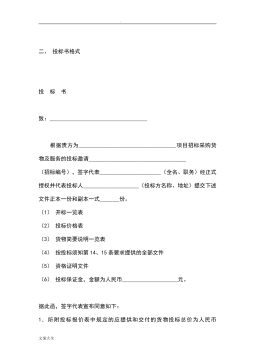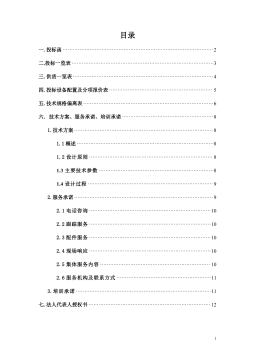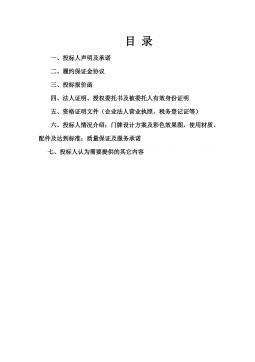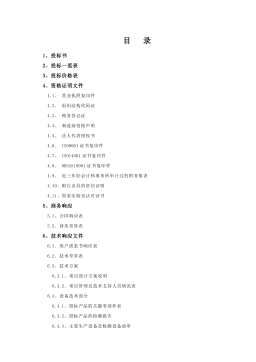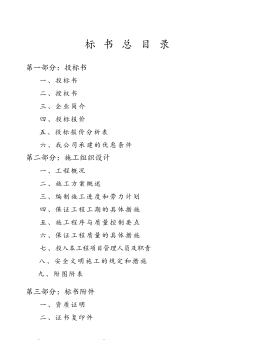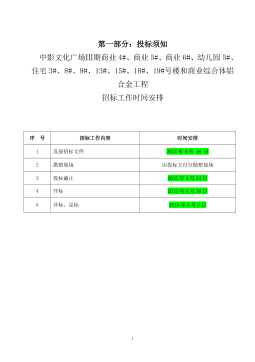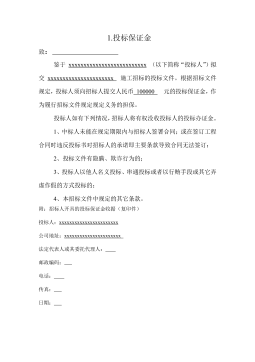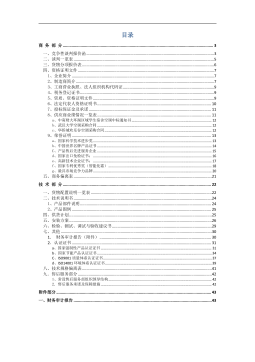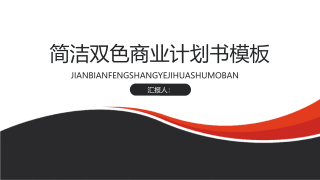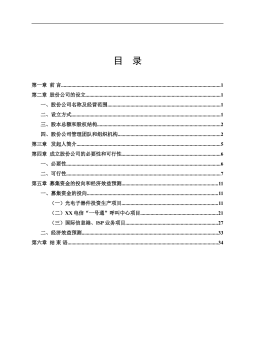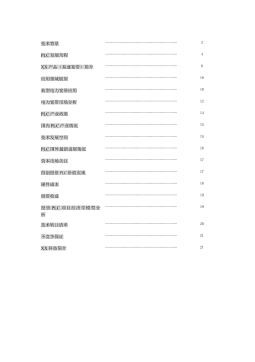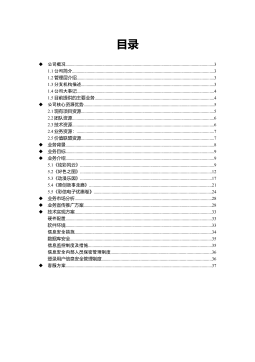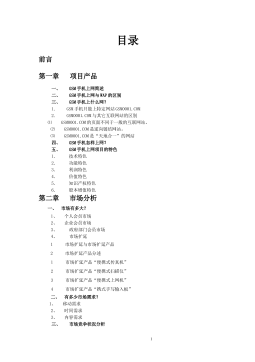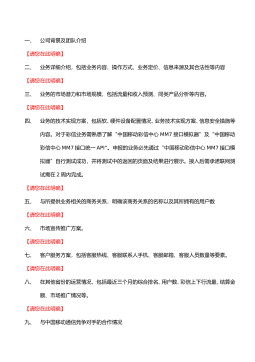中国水污染税税率设计研究
VIP免费
硕士学位论文
I
摘要
自 2005 年松花江水污染事件之后,环境税就被提上了议事日程,党的十七大
报告也提出了建设“生态文明”,近两年要求把环境税作为新的环境管理手段,
通过开征环境税来解决环境污染问题的呼声越来越高。这些都充分说明了当前对
环境保护的重视。改革传统环保费税制度,建立新型环保绿色税收体系已经刻不
容缓。
作为环境保护的重要政策工具,环境税在遏制污染、改善环境质量方面的作
用已被国际社会广泛认可,国外许多国家的环境税制已经建立得比较完善。但环
境税在中国是一个新的税种,缺乏环境税制设计和征管经验,因此在开征此类税
收初期,课征范围不宜太宽,应采取循序渐进的办法,先从重点污染源和易于征
管的课征对象入手。在我国众多环境问题中,水污染问题最为严重,我国水资源
贫乏的同时大量水体又遭到污染,水资源短缺加上水污染严重,已经影响了我国
经济的发展和社会的和谐,所以作为环境税重要组成部分的水污染税,尤其值得
我们关注,而税率又是水污染税的核心。本文正是基于这一背景,为保护我国稀
缺水资源、发展循环经济,使我国走上可持续发展的道路,以“中国水污染税税
率设计研究”为主题,结合我国国情,回顾国外已开征水污染税的实践情况,从
中借鉴他们先进的征管经验。之后,通过对水污染税制与排污收费政策、环境补
贴政策、许可证交易政策比较,得出目前在我国开征水污染税是解决我国严重水
污染问题的理想选择,并在“外部性理论”、“公共物品理论”和“双重红利假说”
的指导下,提出了符合我国国情的水污染税税率设计的基本原理、原则及分类,
并着重对工业污水和城市生活污水的点源污染及农业废水等非点源污染的税率进
行了详细、周密的设计。
本文对水污染税税率设计研究另辟蹊径,尤其对工业污水的税率设计,即根
据污染物对环境所造成的损失估计值, 结合治理污染所需的资金数量和工业废水
排放的总量来计算确定水污染税税率,把污染物对环境造成的损失值平均分摊到
每单位废水上,求得的税率就是排放每单位废水所要承担的成本。本文认为根据
环境退化成本算出来的税额可作为工业企业水污染税税率的上限,而根据虚拟治
理成本算出来的税额可作为工业企业水污染税税率的下限。除此,考虑到地区间
存在着气候条件、经济发展水平、人口密度状况等因素的差异,排放的等量污染
物对水体造成的边际损害成本不同,所以依据上述影响因素把全国又分为几个区
域来分析研究。各省份根据以上算得的两个指标确定一个总体税率幅度,再根据
硕士学位论文
II
所属区域的税率幅度,结合本地的具体情况确定相应的适用税率。在考虑现行污水
处理费征收标准的基础上,本文对城市生活污水税率的确定是根据每单位排放的
城市生活污水对水体造成的污染程度来设计其相应的城市生活污水税率,保证根
据该设计的税率对城市生活污水征收的税额足以弥补其对水体造成的损失。本文
对像农业废水等这种非点源污染则通过设计污染产品税来解决该类型的水污染问
题。
可以说,本文对水污染税税率设计研究突破了以往纯理论研究的局限性,结
合我国实际情况真正做到了能够为有关部门制定水污染税税率提供依据,为水污
染税早日在中国实施奠定了基础,同时也为改善水污染状况,促进产业升级,在
我国建立水污染税收法律体系提供了有利参考。
关键词:水污染税;税率;点源污染;非点源污染
硕士学位论文
III
ABSTRACT
The environmental tax was put on the agenda since the Songhua River had been
polluted in 2005.The party's 17 report also raised the question of "ecological
civilization". Calling for an environmental tax as a new tools of environmental
management, through the introduction of environmental taxes to solve the
environmental problems called for increasingly high in the past two years. Those
demonstrated that the current emphasis on environmental protection fully. Reform the
traditional system of green fees and taxes and establish a new tax system has been of
great urgency in our country.
Environmental taxes is an important policy tool for environmental protection
which hold back pollution and improve the role of environmental quality has been
recognized by the international community widely. Environmental taxation has
established a relatively perfect in many foreign countries. However, environmental tax
is a new thing in China. It lacks experience of designing and administration of
environmental tax. Therefore, it levies on the scope should not be too wide in the early
introduction of environmental taxes. It should start with a gradual approach, the key
sources of pollution and easy-to-class collection. As we know, among many
environmental problems, the water pollution is the most serious in China. The scarce
water resources, while a lot of water has been polluted which have affected China's
economic development and social harmony. The water pollution tax particular deserves
our attention as an important component of environmental taxes. In order to protect our
scarce water resources, develop a recycling economy and let our country onto the road
of sustainable development in this context," research on the design of water pollution
tax rate in China" as its theme in this article. The article combined with China's national
conditions, reviewed the introduction of water pollution tax situation in foreign, and
learn from their advanced experience. After comparing water pollution tax with
charging policies, environmental subsidy policy, licensing policy, conclude that the
introduction of water pollution tax is an ideal choice to solve the serious problems of
water pollution in China. Under the guidance of the theory of "externality theory ","
public goods theory "and " double dividend hypothesis ", put forward the basic
principles, principles and classification of designing of water pollution tax rate in line
with China's national conditions. The article designs the water pollution taxes rate of
硕士学位论文
IV
point source water pollution like industrial wastewater and urban domestic sewage and
non-point source water pollution like agricultural waste water in detail and carefully.
The article research the design of water pollution tax rate in another way,
especially for designing of industrial wastewater rate. According to loss estimate which
caused by pollutants on the environment, combined with the amount of funds needed
for pollution control and the total amount of industrial wastewater discharge to calculate
the water pollution tax rate. The loss of assessed value of the pollutants on the
environment equal to the average per unit of water, which obtained the rate is the costs
which per unit of discharge of sewage to bear. This article argues that the limit of water
pollution tax rate of industrial is calculated according to the cost of environmental
degradation, the lower limit of water pollution tax rate of industrial is calculated
according to virtual treatment costs. Considering on the difference of the existence of
regional climatic conditions, economic development level, population density and
equivalent emission of pollutants caused by the marginal damage costs, divided into
several regions to formulate corresponding water pollution tax rate. According to the
two indicators above, the provinces can determine an overall rate increase, then
combine their respective areas of duty rate and local circumstances to determine the
corresponding applied tax rates. Considering the standard of the existing sewage
treatment fee charged, the article determinates municipal sewage tax rate bases on the
emission of urban sewage on water pollution severity. According to the design of tax
levy taxes sufficient to cover the cost of the urban domestic sewage water damage. The
article claims to solve non-point source pollution such as agricultural use pollution taxes
of products.
This thesis breaks through pure research and combines with the actual situation in
our country, which can really provide a basis of designing water pollution tax for some
government and lays a foundation for laving water pollution tax in China as soon as
possible. It also improves the situation of water pollution, and promotes industrial
upgrading and provides a favorable reference for establishment of the water pollution
tax law system in China.
Key words: water pollution tax; tax rate; point-source pollution; nonpoint-source
pollution
硕士学位论文
V
目录
第一章 绪论……………………………………………………………………1
第一节 选题的背景和意义…………………………………………………… 1
第二节 国外研究现状及实践………………………………………………2
第三节 国内研究现状及不足………………………………………………6
第四节 论文的结构、创新与不足…………………………………………7
第二章 开征污染税的基本理论……………………………………………………9
第一节 水污染税收政策与其他经济政策比较………………………………9
第二节 开征污染税的经济理论………………………………………………10
第三节 “双重红利”假说……………………………………………………13
第三章 水污染税税率设计的基本原理、原则及分类……………………………15
第一节 水污染税税率设计的基本原理………………………………………15
第二节 水污染税税率设计的基本原则………………………………………16
第三节 水污染税税率设计的基本分类………………………………………17
第四章 水污染税税率设计研究……………………………………………………18
第一节 工业污水税率设计…………………………………………………18
第二节 城市生活污水税率设计…………………………………………22
第三节 非点源污染税率设计……………………………………………27
第四节 水污染税税率设计的可行性分析…………………………………28
第五章 主要结论及进一步展望……………………………………………………31
第一节 主要结论……………………………………………………………31
第二节 展望…………………………………………………………32
参考文献………………………………………………………………………………33
后 记 …………………………………………………………………………………37
硕士学位论文
1
第一章 绪 论
第一节 选题的背景和意义
环境为人类社会发展提供了物质基础,是人类社会物质生产和生活最基本的
条件。然而,随着我国工业的发展,人与自然关系的处置失当,引发了大量的环
境污染问题,其中最令人担忧的是,像我国这么一个水资源贫乏国家中还存在着
大量的水污染问题。我国是世界 13 个缺水国家之一,全国 600 多个城市中大约
一半的城市存在缺水问题,水污染的恶化更使水短缺雪上加霜:我国江河湖泊普
遍遭受污染,全国 75%的湖泊出现了不同程度的富营养化,90%的城市水域遭到
严重污染,南方城市总缺水量的 60%-70%是由水污染造成的。对我国 118 个大中
城市的地下水调查显示,有 115 个城市地下水受到污染,其中重度污染约占 40%。
可以说,目前我国的水污染防治形势已经十分严峻,水污染造成的灾害范围非常
大,水污染问题已经成为我国无法回避的世纪挑战。
面对现代经济发展所带来的日益严重的环境污染和生态破坏,各国政府从经
济社会可持续发展考虑,积极寻求有效的管制工具。中国政府也尝试运用税收手
段来激励和约束人们的行为进而使之符合环境政策目标。在国务院 2007年6月
印发的发展改革委会同有关部门制定的《节能减排综合性工作方案》中,中国政
府明确表示了要研究开征环境税。到了 2008 年这一改革进程明显加快,目前财
政部、国家税务总局和环境保护部三部门正在联合研究制定这一法律制度。正基
于这一背景,本文选取了环境税中的水污染税作为研究的切入点,开征污染税不
仅可以改变污染者行为,而且其税收收入还可以用来保护环境和改善税收结构,
实现环境、经济和社会的“三赢”1。
通常环境税有狭义说和广义说两种。狭义的环境税就是指环境污染税。广义
环境税是为保护环境,使其免受污染和破坏,以及为保护自然资源的合理开发利
用而设置的有多种税种组成的一个特殊的税收体系总称。因此,从环境税的内涵
来看,本文所指的污染税相当于狭义的环境税,是广义的环境税的一种。而水污
染税是污染税中的重要一种,具体是侧重于对造成水体污染行为、污染产品征收
的一种税。任何一部税法,尽管其调节的具体经济关系有别,参与分配的对象不
同,但其中心内容都是解决与应纳税金额相关因素的确定和计量问题。应纳税额
一般取决于税基和税率两个基本因素的确定,即:应纳税额=税基×税率。税收
1王金南等.打造中国绿色税收[J].环境经济, 2006,(9):10-20.
摘要:
展开>>
收起<<
硕士学位论文I摘要自2005年松花江水污染事件之后,环境税就被提上了议事日程,党的十七大报告也提出了建设“生态文明”,近两年要求把环境税作为新的环境管理手段,通过开征环境税来解决环境污染问题的呼声越来越高。这些都充分说明了当前对环境保护的重视。改革传统环保费税制度,建立新型环保绿色税收体系已经刻不容缓。作为环境保护的重要政策工具,环境税在遏制污染、改善环境质量方面的作用已被国际社会广泛认可,国外许多国家的环境税制已经建立得比较完善。但环境税在中国是一个新的税种,缺乏环境税制设计和征管经验,因此在开征此类税收初期,课征范围不宜太宽,应采取循序渐进的办法,先从重点污染源和易于征管的课征对象入手。在...
作者:周伟光
分类:高等教育资料
价格:150积分
属性:41 页
大小:357.67KB
格式:PDF
时间:2024-09-20


